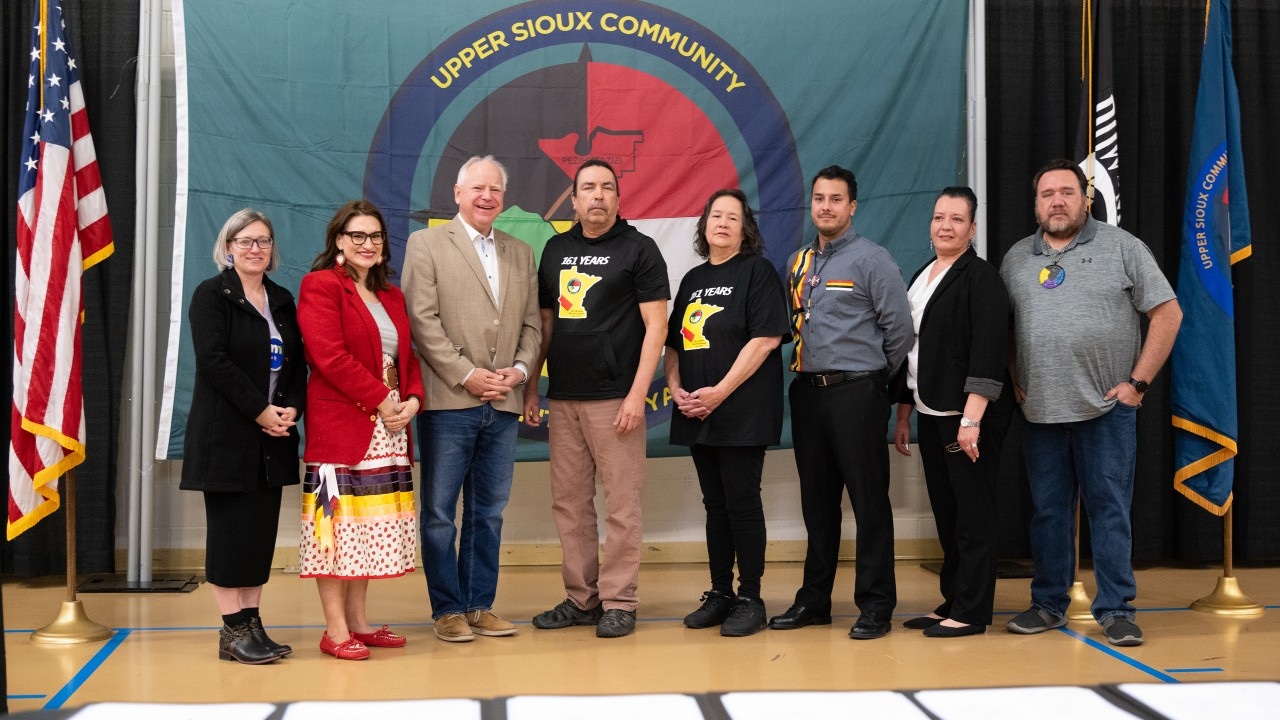Minnesota and Upper Sioux tribal leaders mark transfer of former state park land

State and tribal leaders pose during a ceremony to officially transfer former state park land to the Upper Sioux Community on March 15, 2024. (Courtesy: DNR)
In a historic move, land that was part of a state park until earlier this year has officially been transferred to the Upper Sioux Community.
State leaders, including Gov. Tim Walz, Lt. Gov. Peggy Flanagan and Department of Natural Resources Commissioner Sarah Strommen, joined tribal leaders on Friday morning for the official transfer ceremony.
5 EYEWITNESS NEWS first reported on the plan to return Upper Sioux Agency State Park to the Dakota people last year after state lawmakers approved the transfer. The state then closed the park last month to remove infrastructure ahead of the exchange.
“After years of work, I’m grateful to mark the official return of this land to the Yellow Medicine Dakota People,” Walz said. “In 2019, Chairman Kevin Jensvold shared with me the history and significance of this land to the Yellow Medicine People. Together as partners — Tribal, state, and federal — we worked to return the land to its original caretakers. This isn’t us doing the right thing, we are simply undoing the wrong thing.”
State officials say the transferred land is the sacred homeland of the Dakota people and was also the site where many native people starved in 1862 when the federal government failed to deliver food as promised by treaty.
“While we may not be directly responsible for what occurred, we play an absolute part and have a responsibility in correcting the wrongs that were committed there,” Flanagan, a citizen of the White Earth Nation, said during the ceremony.
Tribal Chairman Kevin Jensvold echoed that sentiment, saying, “None of us were here back then to participate in the wrongs that happened, but we’re here to today, governor, and helping to make the rights.”
The Upper Sioux Community sits just outside the land that was within the state park, and Jensvold told 5 EYEWITNESS NEWS that the transfer has been a goal of his for nearly two decades.
“This land transfer is an important moment in our state’s history. Given its significance to Dakota people and the tragic events that took place there, it was inappropriate to continue to operate a park at that site,” Strommen said. “Minnesota DNR has been honored and humbled to have worked with the Upper Sioux Community on the return this land to the Community. We now look forward to continuing to explore new recreation opportunities in the Minnesota River Valley.”
The legislation approving the transfer also allocated funding for the DNR to develop an “alternative recreational opportunity” or opportunities in the River Valley. While the agency solicited public feedback and held two public working sessions regarding plans for the River Valley area, the DNR is still evaluating ideas for those outdoor recreation opportunities.